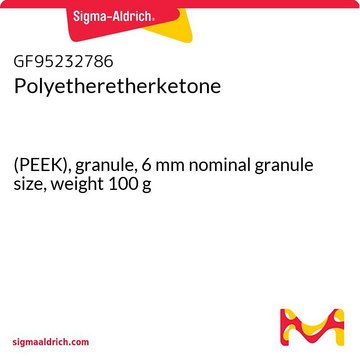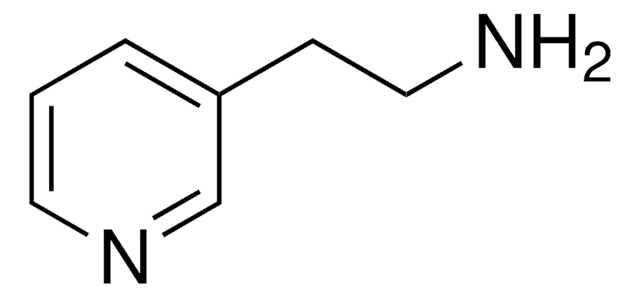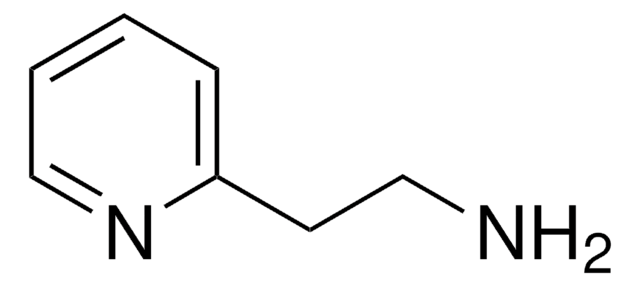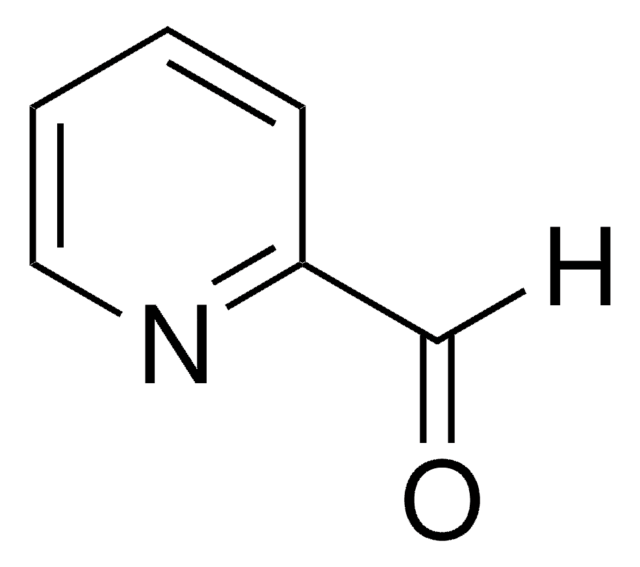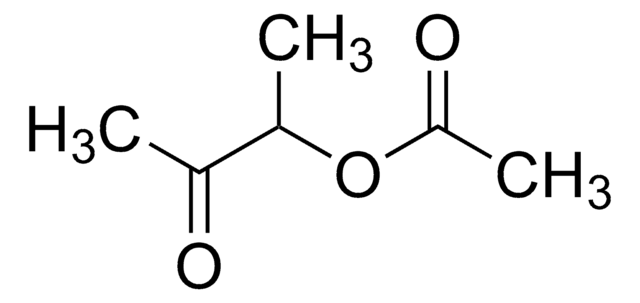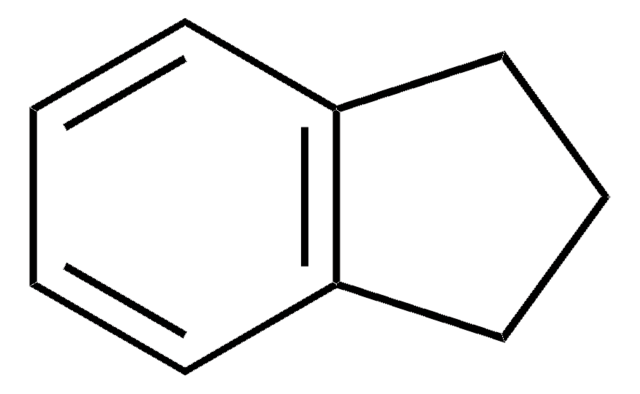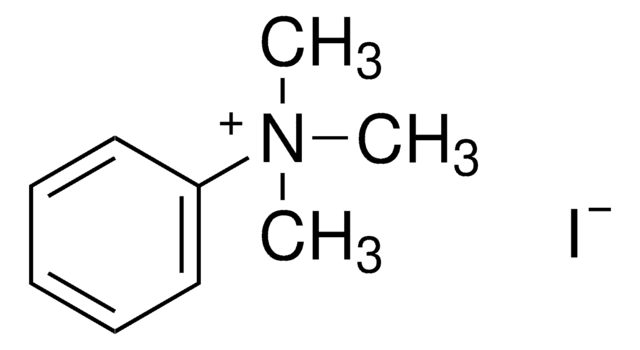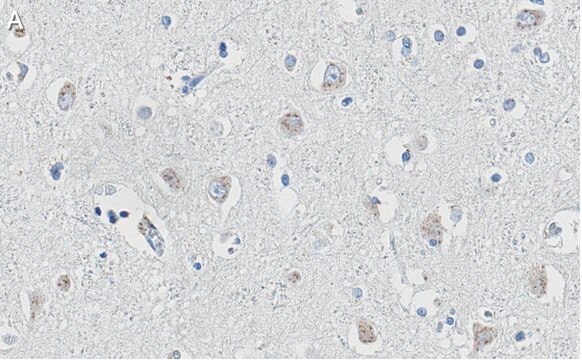17-10242
ChIPAb+ Trimethyl-Histone H3 (Lys9) - ChIP Validated Antibody and Primer Set
clone CMA308, from mouse
Sinónimos:
H3K9me3, Histone H3 (tri methyl K9), H3 histone family, member T, histone 3, H3, histone cluster 3, H3
About This Item
Productos recomendados
biological source
mouse
Quality Level
antibody form
purified immunoglobulin
clone
CMA308, monoclonal
species reactivity
human, vertebrates
manufacturer/tradename
ChIPAb+
Upstate®
technique(s)
ChIP: suitable
western blot: suitable
isotype
IgG1κ
NCBI accession no.
UniProt accession no.
shipped in
dry ice
General description
The ChIPAb+ Trimethyl-Histone H3 (Lys9) set includes the Trimethyl-Histone H3 (Lys9) antibody, a Normal mouse IgG, and control primers which amplify a 117 bp region of ChIP Primers, ZNF554. The Trimethyl-Histone H3 (Lys9) and negative controls are supplied in a scalable "per ChIP" reaction size and can be used to functionally validate the precipitation of Trimethyl-Histone H3 (Lys9) -associated chromatin.
Specificity
Immunogen
Application
Representative lot data.
Sonicated chromatin prepared from HeLa cells (1 X 10E6 cell equivalents per IP) were subjected to chromatin immunoprecipitation using 1 µL of either Normal Mouse IgG,or 1 µL of Anti-Trimethyl Histone H3 (Lys9), and the Magna ChIP® G Kit (Cat. # 17-611). Successful immunoprecipitation of trimethyl Histone H3 (Lys9) associated DNA fragments was verified by qPCR using ChIP primers specific for the human ZNF554 region as a positive locus and human GAPDH primers as a negative locus. (Figure 2). Data is presented as percent input of each IP sample relative to input chromatin for each amplicon and ChIP sample as indicated.
Please refer to the EZ-Magna ChIP G (Cat. # 17-409) or EZ-ChIP (Cat. # 17-371) protocol for experimental details.
Western Blot Analysis:
Representative lot data.
Recombinant Histone H3 (Cat. #14-494) (Lane 1) and HeLa acid extract (Lane 2) were resolved by electrophoresis, transferred to PVDF membrane and probed with Anti-trimethyl Histone H3 (Lys9), clone CMA308 (2 μg/mL). Proteins were visualized using
a goat anti-mouse secondary antibody conjugated to HRP and a chemiluminescence detection system.
Arrow indicates trimethyl Histone H3 (Lys9) (~17 kDa). (Figure 3).
Epigenetics & Nuclear Function
Histones
Packaging
Quality
Representative lot data.
Sonicated chromatin prepared from HeLa cells (1 X 10E6 cell equivalents per IP) were subjected to chromatin immunoprecipitation using 1 µL of either Normal Mouse IgG, or 1 µL of Anti-Trimethyl Histone H3(Lys9), and the Magna ChIP® G Kit (Cat. # 17-611). Successful immunoprecipitation of trimethyl Histone H3 (Lys9) associated DNA fragments was verified by qPCR using ChIP primers specific for the human ZNF554 region as a positive locus(Figure 1). Please refer to the EZ-Magna ChIP G (Cat. # 17-409) or EZ-ChIP (Cat. # 17-371) protocol for experimental details.
Target description
Physical form
Normal Mouse IgG. One vial containing 25 µg of purified IgG in 25 µL of storage buffer containing 0.1% sodium azide. Store at -20°C.
Control Primers, ZNF554. One vial containing 75 μL of 5 μM of each primer specific for the 3’ end of human ZNF554. Store at -20°C.
FOR: CGG GGA AAA GCC CTA TAA AT
REV: TCC ACA TTC ACT GCA TTC GT
Storage and Stability
Analysis Note
Includes normal mouse IgG and primers specific for human ZNF554.
Legal Information
Disclaimer
Storage Class
10 - Combustible liquids
Certificados de análisis (COA)
Busque Certificados de análisis (COA) introduciendo el número de lote del producto. Los números de lote se encuentran en la etiqueta del producto después de las palabras «Lot» o «Batch»
¿Ya tiene este producto?
Encuentre la documentación para los productos que ha comprado recientemente en la Biblioteca de documentos.
Nuestro equipo de científicos tiene experiencia en todas las áreas de investigación: Ciencias de la vida, Ciencia de los materiales, Síntesis química, Cromatografía, Analítica y muchas otras.
Póngase en contacto con el Servicio técnico